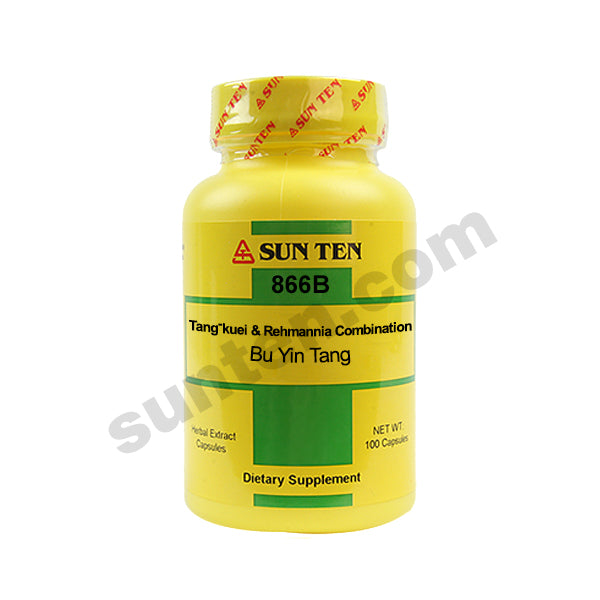Bu Yin Tang
Tang-kuei & Rehmannia Combination Capsules | 補陰湯
Practitioners: Please LOGIN to view the wholesale price. This item can only be purchased by a licensed practitioner. Find a practitioner
Ingredients: Tang-kuei root (dang gui), White peony root (bai shao), Raw rehmannia root (sheng di huang), Oriental ginseng root, Hoelen fungus (fu ling), Anemarrhena root (zhi mu), Phellodendron bark (huang bai), Achyranthes root (niu xi), Scurfy-pea seed (bu gu zhi), Fennel fruit (xiao hui xiang), Eucommia bark (du zhong), Cooked rehmannia root (shu di huang), Citrus peel (chen pi), Chinese licorice root (gan cao).
| Mandarin: 補陰湯 Pin-Yin: Bu Yin Tang English: Tang-kuei & Rehmannia Combination Romaji: Ho In To Kanji: 補陰湯 Kampo: No |

